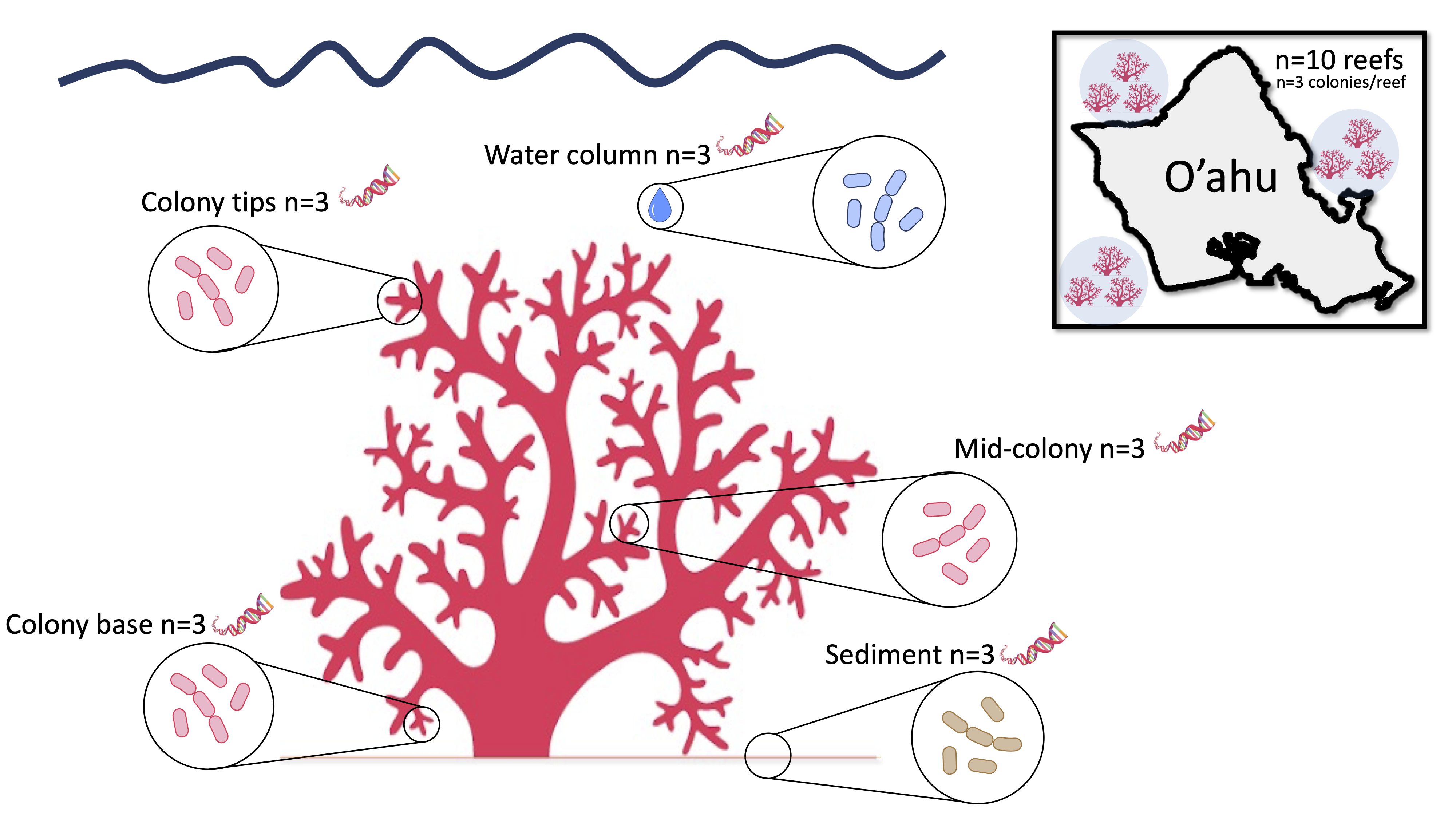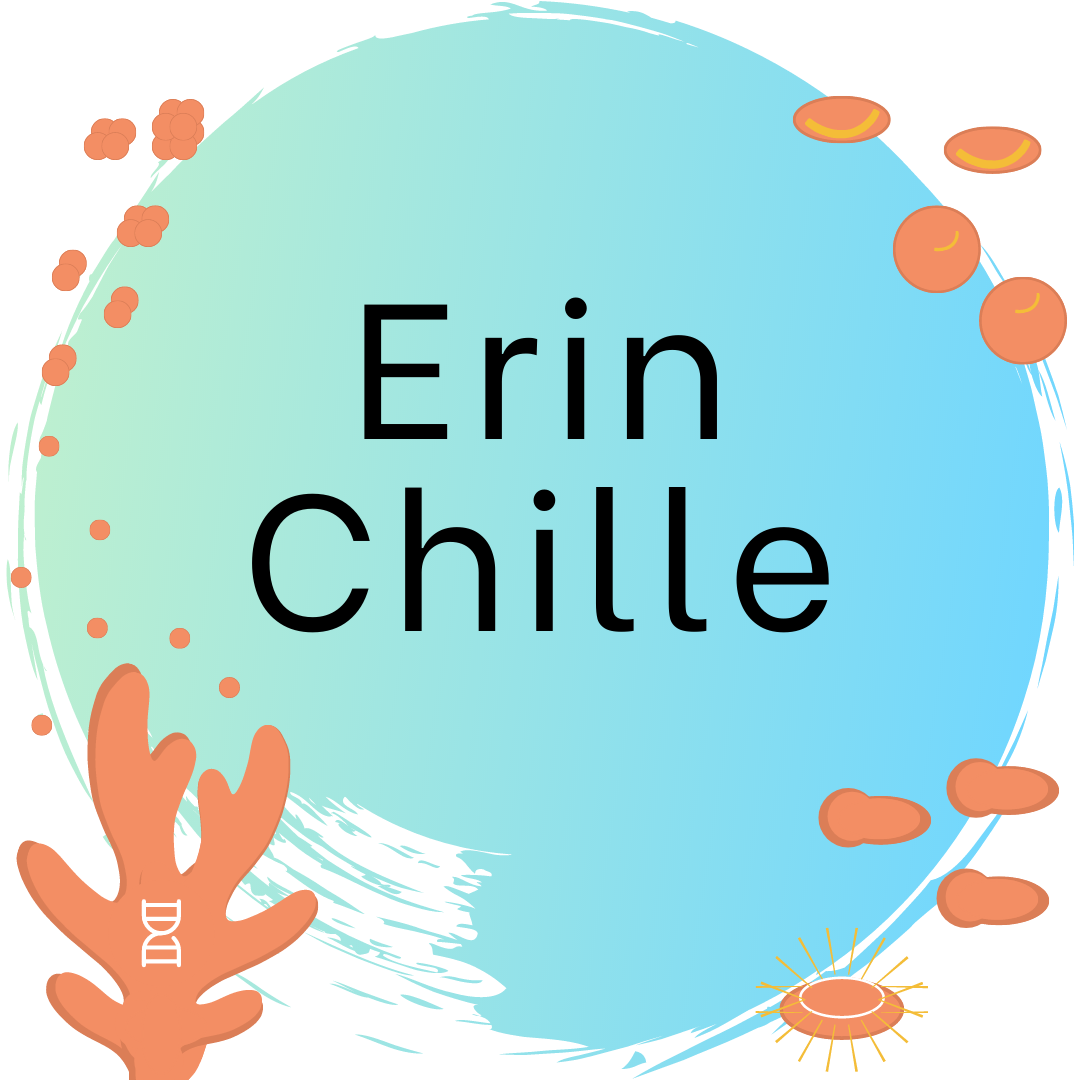2022 Hawaii Field Plan
This post describes the timeline and methodology for all work planned during the 2022 Hawaii field season (May 3 - 24, 2022). Four or five studies will be undertaken during this trip. A short description of each will be provided below. More information can be found on the fieldwork Project Planning Board and Gannt chart made by Dr. Tim Stephens.
Study 1: Pacu ploidy and stress response
Study 2: Pacu and Mcap regional population structure and connectivity
Study 3: Coral Microbiome Biogeography across colonies and reefs
Sampling Plan (Fig. 1):
To characterize microbiome biogeography of Montipora capitata in O’ahu, Hawai’i, we will sample coral tissue (n=3) from three regions on the coral colony: the tips, mid-region, and base. Coral colonies (n=3 reef-1) will be sampled from 10 reefs around the island of O’ahu to assess geographic variability in microbiome composition. We will additionally collect water (n=3) and sediment (as appropriate; n=3) samples from the vicinity of each colony for use as controls. All 450 samples (270 coral, 90 water, 90 sediment) will be processed using 16S rRNA sequencing to identify microbial community composition.
|  |
| — |
| Figure 1. Experimental Design |
|
| — |
| Figure 1. Experimental Design |
Coral microbiome sampling and processing
Water microbiome sampling and processing
Follow seawater collection methods described here. In short, each seawater sample is collected using a 60 mL syringes attached to a filter holder each containing a 0.22 μm pore size Supor® filter (Pall Corporation, Ann Arbor, MI, USA). Syringes will be stored in sterile Whirl-pack® bags prior to sampling.
